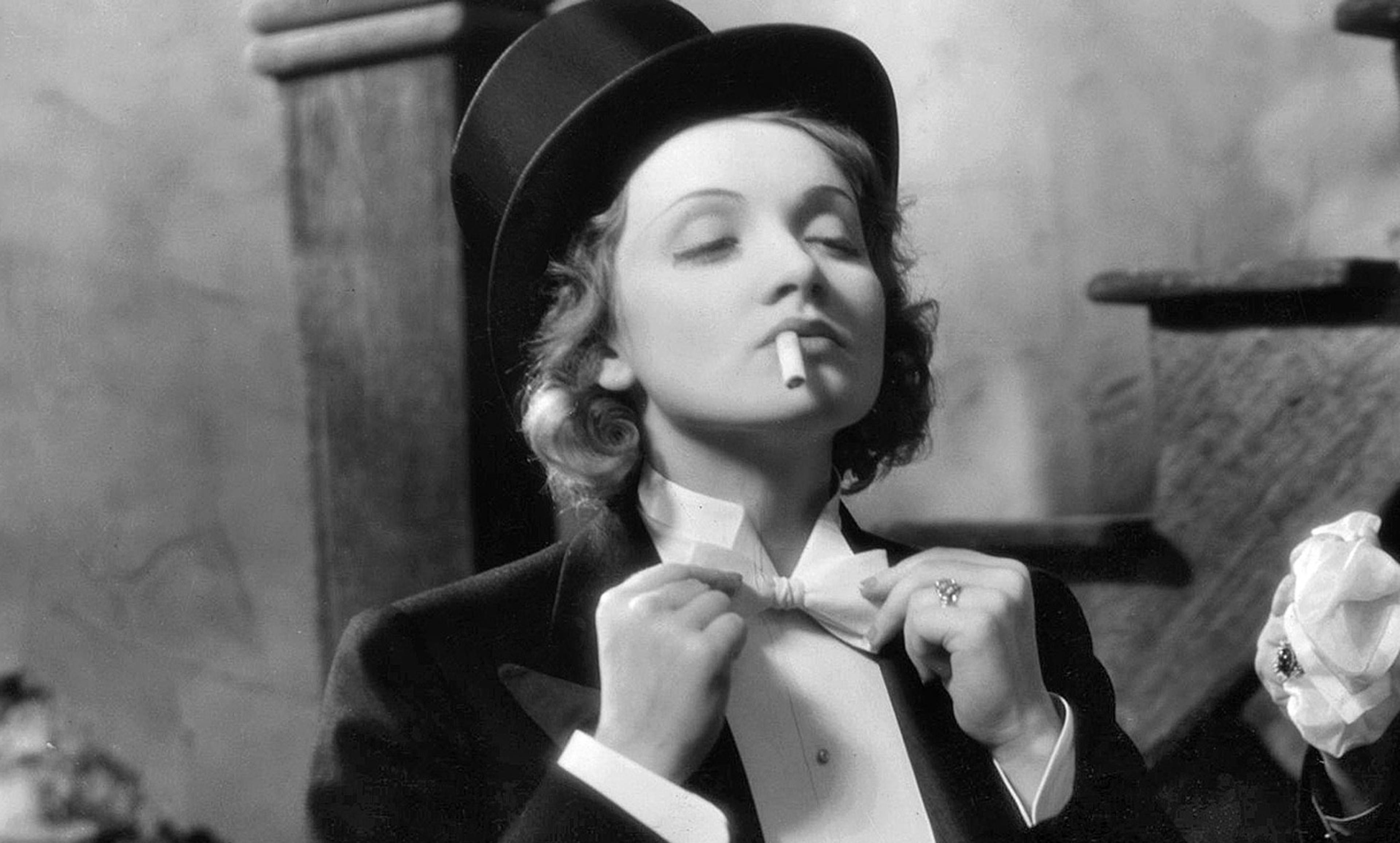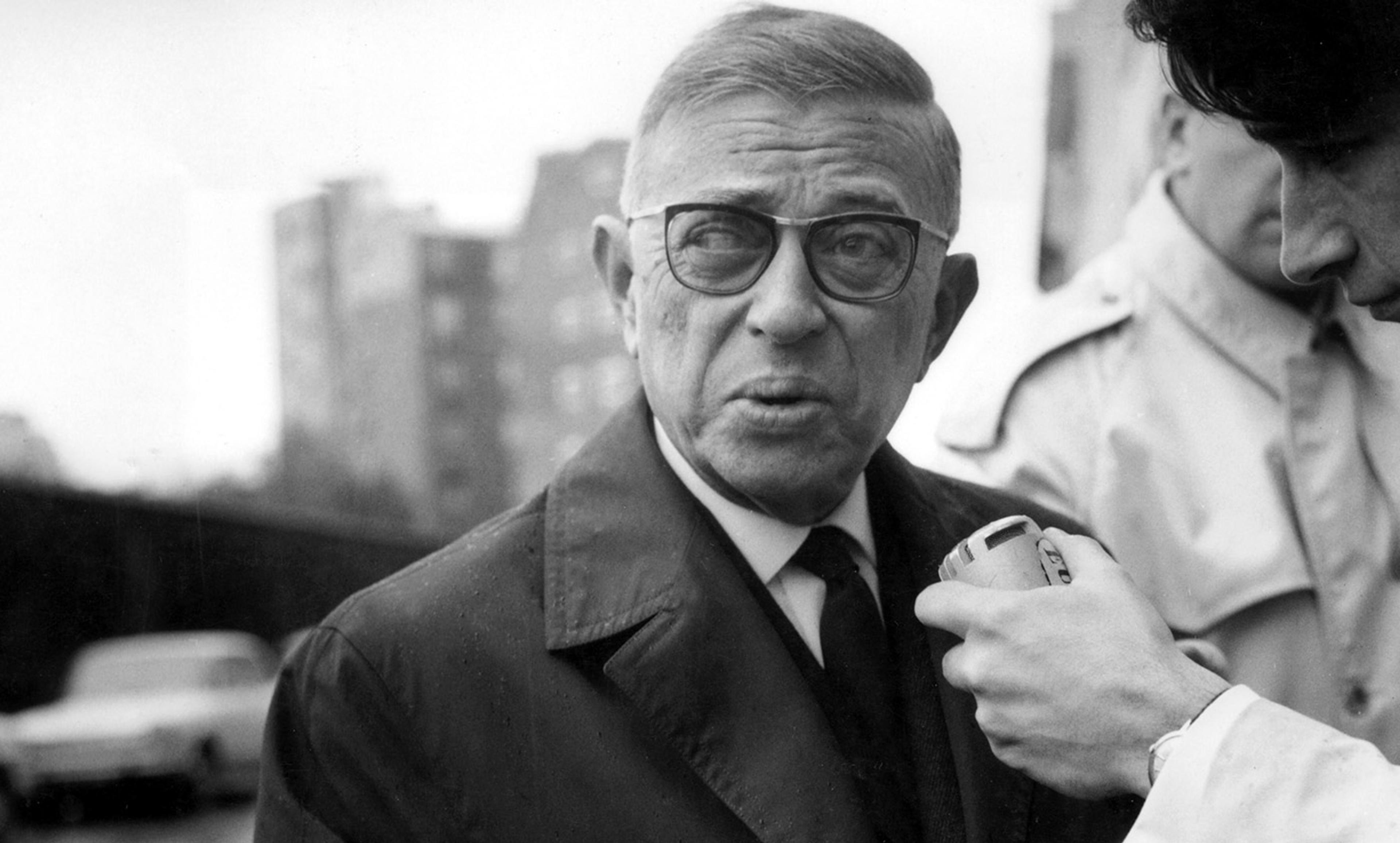Marlene Dietrich on the set of Morocco (1930). Photo courtesy Paramount Pictures
Gender is burdened by a lot of adjectives these days. It’s non-binary, it’s fluid, it’s ‘over’. According to the American rapper Young Thug, an artist at the helm of hip-hop who is known to occasionally wear dresses, ‘there’s no such thing as gender’ at all.
These descriptions share the common assumption that gender is mutable, not fixed. Most contemporary public conversations about what it means to be men and women will engage with some version of this thesis – a development that’s due, in large part, to the work of the American philosopher Judith Butler. Her theory of ‘performativity’ upended ideas about gender by shedding light on the many processes that produce it, and the theory’s far-reaching consequences are still widely misunderstood.
It’s unfortunate that popular culture often reduces performativity to the idea that ‘gender is a social construct’. This catchphrase sets the ‘social’ against the ‘natural’, and implies that gender is merely an artificial layer, encrusted by choice onto the supposedly more fundamental reality of sex. But Butler was careful to avoid arguing for a simple split between nature and culture, or sex and gender. For her, gender wasn’t predetermined by nature or biology, nor was it simply ‘made up’ by culture. Rather, Butler insisted that gender resides in repeated words and actions, words and actions that both shape and are shaped by the bodies of real, flesh-and-blood human beings. And crucially, such repetitions are rarely performed freely.
What’s at stake in performativity stretches into the minutiae of the everyday. I was recently on a road trip with a group of friends, and one woman observed that she always lets her partner, a man, drive her car instead of doing so herself. Such an acquiescence feels feminine, she said. The question Butler would want us to ask is: does my friend do this because she is a woman, or does the act itself contribute to making her so?
Although Butler is its most famous advocate, the concept of performativity is rooted in earlier observations about how language works. In the mid-1950s, the English philosopher J L Austin pointed out that language is often a way of accomplishing things in the world, not only a means of describing it. To make a promise, for example, is to do the promising, not just to say something about it. In How to Do Things with Words (1962), Austin described these types of statements, which entailed performing actions, as (you guessed it) ‘performatives’. This focus on the functionality of statements, not their truth or falsity, proved to be revolutionary, and the interdisciplinary enterprise of ‘speech act theory’ was born in its wake. In a wonderful way, the neologism did exactly what it was describing – it made things happen in the world.
Roughly 30 years later, Butler linked performativity to gender, making explicit reference to the American philosopher John Searle’s work on speech act theory. Butler was interested in Searle’s analysis of the way that performatives don’t simply do things, they also commit the people involved to future actions. For example, when a judge declares a case closed, she’s not simply ending the trial, she’s setting off a chain of events – plaintiffs will be acquitted or indicted, and the courtroom adjourned. What Searle noted is that, in order for a performative (the judge’s proclamation) to have any impact on the future, it has to adhere to certain conventions that have already been established. Society needs to accept the authority of the judge and the form of her declaration. A performative, then, is as much a repetition or re-creation of what’s expected as it is an act of individual agency.
It’s against this background that Butler provides her definition in Gender Trouble (1990): ‘gender proves to be performative – that is, constituting the identity it is purported to be’. The basic idea is that gender is created by the very words and actions that appear, superficially, to be simply describing it after the fact. Earlier, in a 1988 essay, Butler had likened gender to ‘an act [in a play] which has been rehearsed, much as a script survives the particular actors who make use of it, but which requires individual actors in order to be actualised and reproduced as reality once again’. Gender is not a thing so much as a process by which patterns of language and action come to repeat themselves.
Embedded within Butler’s concept are two key expansions upon ‘performative’ as Austin or Searle used it. For one, gender does not occur with language only: it’s very much about bodies doing things, such as shaking hands or wearing clothes. Secondly, performing gender is not something that is done by a pre-existing, unfettered individual. Here Butler is re-appropriating Friedrich Nietzsche’s argument in On the Genealogy of Morals (1887), that ‘there is no “being” behind doing … the deed is everything’. That is, gender is not a role that someone simply chooses whether or not to step into, a decision made by a detached, pre-social, conscious mind. Instead, the very identity of the actor is fashioned via the actions themselves – and these actions are often unconscious and at least partly coerced.
Take shaking hands, for example. A ‘masculine’ handshake between two male-identifying individuals is not really a choice, but rather a compulsion rooted in previous actions – both their physical performances (the firm clasp, the decisive shake) and the way they’re spoken or thought about as ‘masculine’ (‘Don’t trust a man with a limp handshake’; ‘He has a good, assertive grip’). There’s an unspoken choreography that moulds the encounter between two men – and indeed, the less it is thought about, the smoother it operates. The moment the performance is brought to the level of awareness is precisely when it comes to feel clunky and unnatural, because this reveals the fact that the sequence could have been executed differently. So, while gender is performed, Butler argues, it is not a truly voluntary performance. Rather, it is made to feel ‘natural’ by virtue of its banality and repetition. The handshake makes the man, not the other way around.
Butler’s claim that performativity precedes identity goes against the grain of Western metaphysics, which clings to the sovereignty of the free, rational individual. This idea is largely due to the 17th-century French philosopher René Descartes, who conceived of the mind as a stable foundation, an internal space that’s ontologically distinct from the body and the world. Butler’s conception of gender, however, suggests that we aren’t pre-existing Cartesian egos ‘constructing’ our gender through acts of will; nor do we ‘inhabit’ some biologically predetermined role. Rather, we’re embodied individuals, propagating particular ways of doing gender, often unthinkingly.
Intriguingly, there’s now the potential for performativity to be taken up in a modified form by cognitive scientists – especially those concerned with how the body and society affect the way we think. Take the relationship between poverty and brain plasticity, for example. The stress of living in poverty can alter physical brain structures in significant ways, such as shrinking the hippocampus. This can affect memory, emotion and other qualities that one might be otherwise tempted to attribute to individual ‘identity’. By adopting a more performative perspective, however, we can see how these neural, bodily structures at once produce and are produced by certain social and circumstantial scripts. Much like performativity does for gender, this approach suggests that the mind is not a pre-existing thing, but an ongoing achievement of an embodied organism, mutable and moulded by a broader context.
Performativity has become a catchword in the humanities, the social sciences and popular culture. In 2016, New York magazine went so far as to declare: ‘It’s Judith Butler’s World’. But while performativity has been developed in the context of gender, it has much deeper implications. It’s a way of making strange that which feels intuitive, of challenging us to take a second look at what appears self-evident. Performativity encourages us not only to see the world differently, but to imagine how we might do it differently. As the philosopher Alva Nöe puts it in Strange Tools: Art and Human Nature (2015): ‘it is our nature to acquire second natures’.






